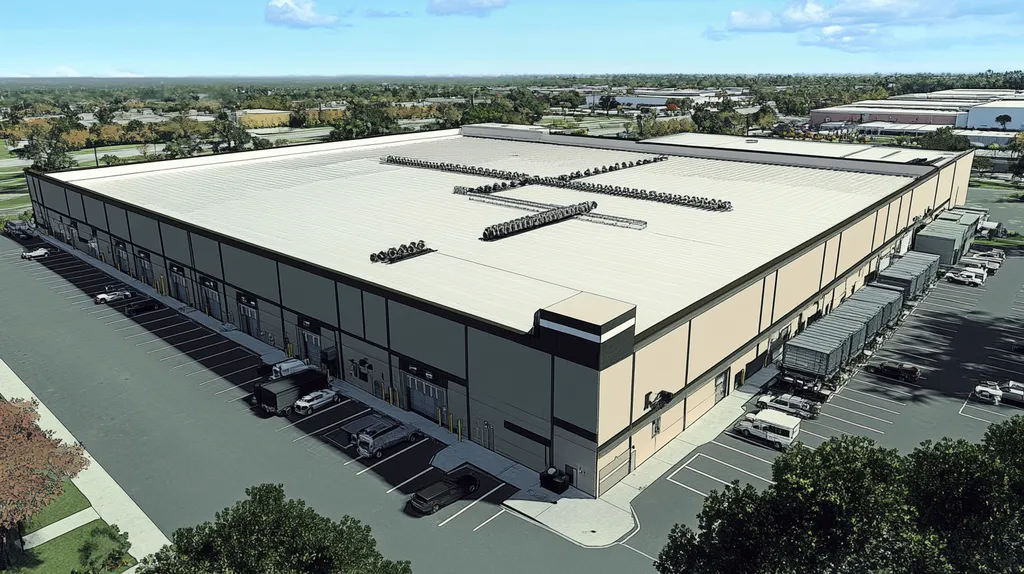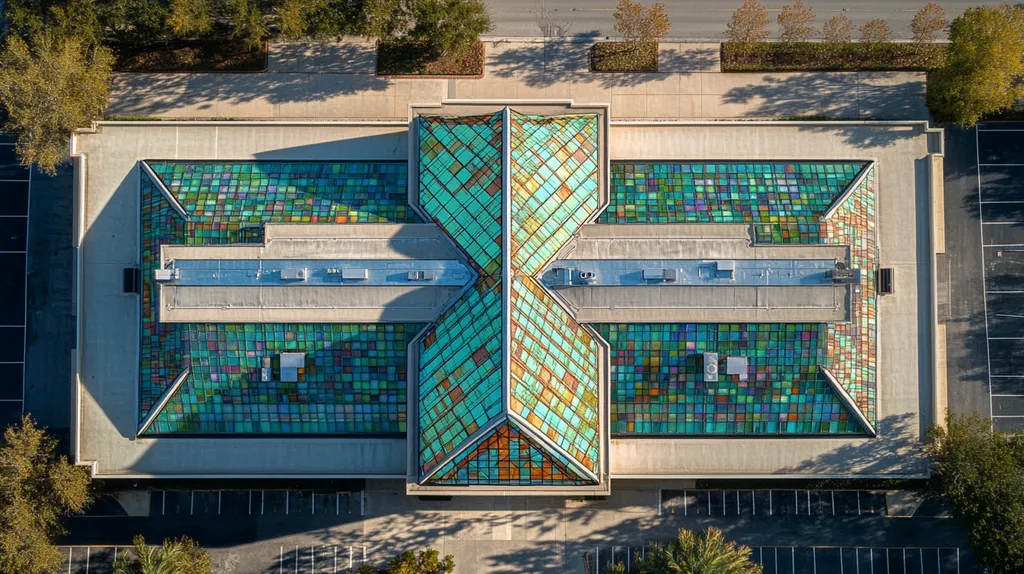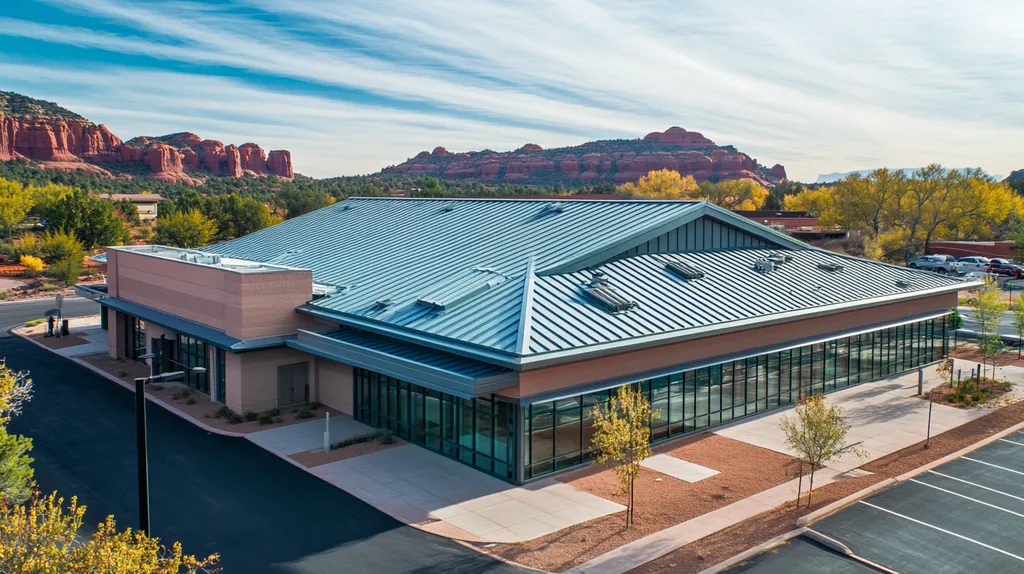Welcome to today’s Battle Royale featuring two roofing heavyweights: “Silicone Coatings” in the east corner versus “TPO Coatings” in the west!
Tonight’s showdown pits these contenders against each other across six punishing rounds designed to test every aspect of their performance for Commercial Roof Coatings.
At stake? Millions in potential costs, decades of building protection, and the critical performance demands of modern commercial and industrial facilities.
Our professional judging panel will evaluate each round on technical merit, real-world performance, and value delivery. After all six rounds, we’ll declare our ultimate champion.
Ladies and gentlemen, facility managers and building owners… it’s time to rumble!
ROUND 1: INITIAL COSTS & INSTALLATION
The stakes for choosing the right commercial roof coating have never been higher, with material costs rising 15-25% annually and labor shortages extending project timelines. Property owners and facility managers must carefully evaluate their coating options to avoid costly mistakes that could impact operations for years to come.
Material Expenses
Material selection represents a critical investment decision that impacts both immediate budgets and long-term facility maintenance costs. Quality materials form the foundation of any successful roofing project, making this evaluation essential.
Silicone coatings command premium pricing, typically costing 30-40% more than TPO alternatives. However, their superior weathering characteristics and longer service life often justify the higher initial investment through reduced lifecycle costs.
TPO coatings offer an attractive entry price point and good basic performance. However, their thinner application requirements and potential for faster degradation can necessitate more frequent recoating or replacement cycles.
“ADVANTAGE: TPO COATINGS” for initial material cost considerations, though this advantage may diminish when examining total ownership costs.
Installation Complexity
The complexity of installation directly impacts project success, labor costs, and potential for future problems. Professional application requirements vary significantly between coating types.
Silicone coatings offer straightforward application processes with fewer weather restrictions and simpler surface preparation requirements. Their forgiving nature helps ensure consistent coverage and reduces the risk of application errors.
TPO installations demand more precise conditions and detailed preparation protocols. Currently, there is no ASTM standard for coating applications on existing metal roofs, which can lead to inconsistent installation practices and variable results. (source: Metal Building Manufacturers Association)
“ADVANTAGE: SILICONE COATINGS” due to simpler application requirements and reduced installation risks.
Project Timeline
Project duration affects both direct costs and operational disruptions. Faster completion means quicker return to normal business operations and reduced exposure to weather-related complications.
Silicone coating projects typically complete in 25-40% less time than comparable TPO installations. Their single-coat application and faster curing times streamline the process significantly.
TPO installations require multiple steps, including precise seam work and longer curing periods between coats. Weather delays and temperature restrictions can further extend completion times.
“ADVANTAGE: SILICONE COATINGS” for their efficiency and minimal business disruption.
ROUND 1 WINNER: SILICONE COATINGS
ROUND 2: DURABILITY & LIFESPAN
Commercial roofing failures represent one of the most significant risks to building operations and asset value. With replacement costs averaging $7-12 per square foot and potential interior damage reaching six figures, selecting a coating system with proven durability is crucial for long-term facility protection.
Recent supply chain disruptions have made premature coating failures even more costly, with some facilities facing 6-12 month material delays. Understanding how different coating systems perform over time has never been more critical for protecting commercial investments.
Weather Resistance
Environmental resilience directly impacts a coating’s ability to protect the underlying roof structure. Factors like precipitation, temperature fluctuations, and wind exposure can accelerate degradation if the coating system isn’t properly engineered for local conditions.
Silicone coatings excel in moisture resistance, maintaining their protective properties even under ponding conditions. Their molecular structure creates a highly stable membrane that resists degradation from rain, snow, and temperature cycling.
TPO coatings provide good initial weather protection but can become compromised over time, especially at seams and penetrations. Their thinner application thickness makes them more susceptible to physical damage from hail and debris.
“ADVANTAGE: SILICONE COATINGS” for superior weather resistance and durability under harsh conditions.
UV Stability
Ultraviolet radiation poses a constant threat to coating integrity, particularly in regions with high sun exposure. UV degradation can lead to premature aging, reduced reflectivity, and eventual coating failure.
Silicone coatings demonstrate exceptional UV stability, maintaining their physical properties and protective capabilities even after decades of sun exposure. Their inorganic composition resists chalking and erosion that commonly affect other coating types.
TPO coatings incorporate UV inhibitors that provide good initial protection. However, these additives can deplete over time, leading to accelerated degradation and potential system failure in as little as 10-15 years.
“ADVANTAGE: SILICONE COATINGS” due to inherent UV stability and longer service life.
Maintenance Requirements
A coating system’s maintenance demands directly impact both operational costs and facility management resources. Regular inspections and repairs must be evaluated against coating life expectancy to determine true lifecycle costs.
Silicone coatings typically require minimal maintenance beyond routine inspections. Their monolithic application eliminates most common failure points, and repairs can usually be completed with simple recoating of affected areas.
TPO coatings often need more frequent maintenance attention, especially around seams and penetrations. The Metal Building Manufacturers Association notes that life cycle costs must be carefully evaluated when choosing between short-term coating options and longer-term solutions. (source: Metal Building Manufacturers Association)
“ADVANTAGE: SILICONE COATINGS” for reduced maintenance requirements and simpler repair procedures.
ROUND 2 WINNER: SILICONE COATINGS
ROUND 3: PERFORMANCE FACTORS
In today’s volatile market, commercial roofing performance can make or break a facility’s operational budget. With energy costs rising 15-20% annually and extreme weather events increasing, choosing the right coating system has never been more critical for protecting valuable assets and controlling expenses.
Performance factors directly impact not just the immediate building envelope, but also influence energy consumption, maintenance schedules, and long-term facility planning. Making an informed choice between silicone and TPO coatings requires careful evaluation of these crucial metrics.
Weather Resilience
TPO coatings require extensive surface preparation, including thorough cleaning, sanding, and priming to achieve proper adhesion. These additional steps increase both installation complexity and vulnerability to weather-related failures. (source: Neogard)
Silicone coatings demonstrate superior resistance to extreme temperature fluctuations and maintain their protective properties even under ponding water conditions. Their molecular structure creates a seamless, waterproof barrier that resists degradation from rain, snow, and thermal cycling.
While TPO coatings offer good initial weather protection, they can become compromised over time, particularly at seams and penetrations. Their thinner application makes them more susceptible to physical damage from hail and wind-driven debris.
“ADVANTAGE: SILICONE COATINGS” for superior weather resistance and long-term durability.
Energy Management
Rising energy costs make coating thermal performance a critical consideration for facility managers. The right coating choice can reduce HVAC loads by 15-25% during peak cooling seasons.
Silicone coatings maintain their reflective properties throughout their service life, with minimal degradation even after decades of UV exposure. This consistent performance helps maintain steady energy savings and predictable cooling costs.
TPO coatings initially provide excellent reflectivity but can lose effectiveness as surface degradation occurs. This diminishing performance often requires more frequent recoating to maintain energy efficiency benefits.
“ADVANTAGE: SILICONE COATINGS” for sustained energy performance and consistent cost savings.
System Integration
Modern commercial roofs must integrate seamlessly with building systems while accommodating numerous penetrations for HVAC, electrical, and communication equipment. Coating compatibility with these elements directly impacts overall performance.
Silicone coatings excel at maintaining watertight seals around roof penetrations and can be easily integrated with existing flashings and terminations. Their flexibility allows for building movement without compromising system integrity.
TPO coatings require specialized detailing around penetrations and often need additional reinforcement at transition points. This complexity increases the potential for installation errors and future maintenance issues.
“ADVANTAGE: SILICONE COATINGS” for superior system integration capabilities.
ROUND 3 WINNER: SILICONE COATINGS
ROUND 4: MAINTENANCE REQUIREMENTS
With facility maintenance budgets stretched thin and skilled labor shortages affecting 78% of commercial properties, choosing a roof coating that minimizes ongoing maintenance has become a critical business decision. Poor maintenance practices lead to premature coating failures, with repair costs often exceeding $50,000 for mid-sized commercial buildings.
Recent supply chain disruptions have made maintenance materials harder to source, with some facilities facing 8-12 week delays for basic repair supplies. This new reality demands coating solutions that can perform reliably with minimal intervention.
Inspection Requirements
The National Roofing Contractors Association emphasizes that proper inspection protocols and ambient conditions are crucial for maintaining coating performance. Temperature, humidity, and weather conditions must be carefully monitored during both installation and maintenance procedures. (source: National Roofing Contractors Association)
Silicone coatings typically require only bi-annual inspections to maintain warranty coverage. Their robust chemical structure resists degradation, allowing for simplified visual assessments focused on mechanical damage.
TPO coatings demand quarterly inspections to monitor seam integrity and surface wear. Their more complex installation means more potential failure points that require regular evaluation.
“ADVANTAGE: SILICONE COATINGS” for reduced inspection frequency and complexity.
Repair Procedures
The complexity and frequency of repairs directly impact both maintenance budgets and facility operations. Simple repair procedures reduce downtime and minimize the risk of contractor errors.
Silicone coating repairs can usually be completed with basic surface cleaning and reapplication over the damaged area. Their chemical properties allow new material to bond effectively with existing coating.
TPO repairs often require specialized techniques and equipment, particularly for seam failures. The multi-layer nature of these systems makes repairs more time-consuming and technically demanding.
“ADVANTAGE: SILICONE COATINGS” for straightforward repair procedures.
Lifecycle Costs
Understanding the total cost of maintaining different coating systems helps facility managers make informed decisions about their roofing investments. These costs include regular inspections, preventive maintenance, and necessary repairs.
Silicone coatings demonstrate lower lifecycle costs due to their durability and simple maintenance requirements. Their resistance to weathering and UV exposure reduces the frequency of repairs and recoating.
TPO systems often incur higher maintenance costs over time due to more frequent repairs and shorter recoating intervals. Their susceptibility to mechanical damage and environmental stress increases long-term expenses.
“ADVANTAGE: SILICONE COATINGS” for reduced lifecycle maintenance costs.
ROUND 4 WINNER: SILICONE COATINGS
ROUND 5: SUSTAINABILITY CREDENTIALS
With new environmental regulations taking effect in 2024 and rising pressure from stakeholders to reduce carbon footprints, sustainable roofing choices have become a critical business imperative. Commercial properties now face increased scrutiny of their environmental impact, with some municipalities requiring sustainability documentation for permit renewals.
The selection of roof coating materials can significantly impact a facility’s environmental performance metrics, affecting everything from energy consumption to waste management. Understanding these implications helps property owners make informed decisions that benefit both their operations and the planet.
Environmental Impact
Material composition and manufacturing processes directly influence a coating’s environmental footprint. The Metal Building Manufacturers Association emphasizes that coating selection must consider both immediate and long-term environmental impacts, including VOC emissions and energy efficiency contributions. (source: Metal Building Manufacturers Association)
Silicone coatings utilize inorganic compounds that produce minimal VOCs during application. Their extended service life reduces the frequency of replacement cycles, minimizing waste generation and resource consumption over time.
TPO coatings require more frequent replacement and generate higher levels of construction waste. While modern formulations have reduced their environmental impact, their shorter lifespan increases the overall carbon footprint of the roofing system.
“ADVANTAGE: SILICONE COATINGS” for superior environmental performance and reduced waste generation.
Energy Performance
A roof coating’s ability to reduce building energy consumption directly impacts both operational costs and environmental footprint. With commercial buildings accounting for nearly 35% of U.S. electricity consumption, energy-efficient roofing solutions play a crucial role in sustainability initiatives.
Silicone coatings maintain their reflective properties throughout their service life, delivering consistent energy savings. Their stable molecular structure resists degradation from UV exposure, ensuring long-term thermal performance.
TPO coatings offer good initial reflectivity but can experience significant degradation over time. This performance decline reduces their energy-saving benefits and may necessitate earlier recoating to maintain efficiency.
“ADVANTAGE: SILICONE COATINGS” for sustained energy efficiency and reduced carbon emissions.
Material Lifecycle
Understanding the complete lifecycle of roofing materials helps facility managers make environmentally responsible choices. This includes evaluating raw material sourcing, manufacturing processes, service life, and end-of-life disposal options.
Silicone coatings offer exceptional durability and can often be recoated rather than removed at end-of-life. Their simple chemical composition facilitates recycling and reduces landfill impact.
TPO coatings typically require complete removal and replacement at the end of their service life. Their multi-layer construction complicates recycling efforts and increases disposal challenges.
“ADVANTAGE: SILICONE COATINGS” for superior lifecycle sustainability.
ROUND 5 WINNER: SILICONE COATINGS
ROUND 6: SPECIALIZED APPLICATIONS
With commercial roofing failures costing businesses over $2.5 billion annually in repairs and disruptions, selecting the right coating for specialized applications has become increasingly critical. Recent industry data shows that 40% of premature coating failures occur in challenging application scenarios where standard solutions prove inadequate.
Property owners face mounting pressure to maximize roof performance while minimizing maintenance costs and environmental impact. Understanding how different coating systems perform in specialized scenarios is essential for making informed investment decisions.
Complex Surface Conditions
Commercial roofs present unique challenges with their varied substrates, penetrations, and existing coating conditions. The Metal Building Manufacturers Association emphasizes that proper evaluation of life cycle costs and application requirements is crucial when selecting coating solutions for complex surfaces. (source: Metal Building Manufacturers Association)
Silicone coatings demonstrate exceptional versatility across different substrate types, including metal, concrete, and existing roof membranes. Their superior adhesion properties and ability to self-level create uniform coverage even on irregular surfaces.
TPO coatings require more extensive surface preparation and may struggle to achieve consistent adhesion on complex substrates. Their performance can be compromised when applied over certain existing materials or in areas with significant surface variations.
“ADVANTAGE: SILICONE COATINGS” for superior adaptability to diverse surface conditions.
Extreme Weather Exposure
Specialized applications often involve exposure to severe weather conditions that can rapidly degrade coating performance. Understanding how different systems handle these challenges is crucial for long-term protection.
Silicone coatings maintain their physical properties under extreme temperature variations and intense UV exposure. Their molecular structure provides exceptional resistance to oxidation and weathering, even in coastal or industrial environments.
TPO coatings can become brittle or degrade more quickly when exposed to extreme conditions. While they offer good initial weather resistance, their performance typically diminishes faster in challenging environments.
“ADVANTAGE: SILICONE COATINGS” for superior resistance to extreme environmental conditions.
Critical Performance Requirements
Many specialized applications demand specific performance characteristics to meet regulatory requirements or operational needs. Coating selection must align with these critical parameters while maintaining long-term viability.
Silicone coatings excel in scenarios requiring superior waterproofing, chemical resistance, or thermal stability. Their consistent performance and minimal degradation make them ideal for applications with strict performance requirements.
TPO coatings perform adequately in standard applications but may struggle to maintain critical performance metrics over time. Their effectiveness can be compromised in applications requiring sustained chemical resistance or waterproofing capabilities.
“ADVANTAGE: SILICONE COATINGS” for maintaining critical performance requirements.
ROUND 6 WINNER: SILICONE COATINGS
AND THE WINNER IS…
After six grueling rounds of technical evaluation, we have our verdict…
In a stunning display of technical superiority, SILICONE COATINGS has emerged as our undisputed champion, winning all six rounds of this epic showdown!
The champion dominated with exceptional durability, weather resistance, and sustainability credentials. Silicone’s superior UV stability, minimal maintenance requirements, and consistent energy performance proved decisive factors in securing this decisive victory.
While TPO Coatings showed impressive potential in the initial cost category and remains a solid contender for budget-conscious projects with shorter performance horizons, it couldn’t match Silicone’s long-term value proposition and technical capabilities.
However, fight fans, remember that every building tells its own story. Local climate conditions, substrate characteristics, and specific performance requirements can all influence coating selection. While this analysis reflects general industry trends, individual facilities may face unique challenges that favor different solutions.
Property owners and facility managers should always consult qualified roofing professionals who can evaluate their specific situation and recommend the most appropriate coating system for their needs.
Ladies and gentlemen, in the high-stakes world of commercial roofing, success isn’t just about picking the champion – it’s about finding the perfect match for your building’s unique requirements. Choose wisely, and may your roof reign supreme!
FREQUENTLY ASKED QUESTIONS
Q. What are the costs of commercial roof coatings?
A. Choosing the right coating impacts immediate and long-term costs. Silicone coatings are 30-40% more expensive than TPO but may save money in the long run due to durability.
Q. How do durability and lifespan differ between coatings?
A. Silicone coatings have superior weather resistance and UV stability, often lasting longer than TPO. TPO may need earlier replacement or recoating due to degradation, impacting overall costs.
Q. What performance factors should I consider for industrial roofs?
A. Important factors include energy efficiency, weather resilience, and system integration capabilities. Silicone coatings maintain reflectivity and resist weather extremes, promoting long-term performance.
Q. How does maintenance differ between silicone and TPO coatings?
A. Silicone coatings typically require less frequent inspections—only bi-annual checks—while TPO demands quarterly inspections due to seam vulnerability. This can impact ongoing maintenance costs.
Q. Are silicone coatings more sustainable than TPO?
A. Yes, silicone coatings produce fewer VOCs during application and have a longer lifespan, which reduces waste. TPO coatings need more frequent replacement, increasing their overall environmental impact.
Q. Can commercial roofs in extreme weather benefit from specific coatings?
A. Absolutely, silicone coatings excel in extreme conditions, maintaining integrity under high UV exposure. TPO may degrade quicker in harsh environments, impacting their performance.
Q. How do roofing coatings impact overall building performance?
A. Coatings influence energy costs, comfort, and durability. Proper selection promotes energy efficiency and can lower HVAC operating costs, enhancing overall building performance.









